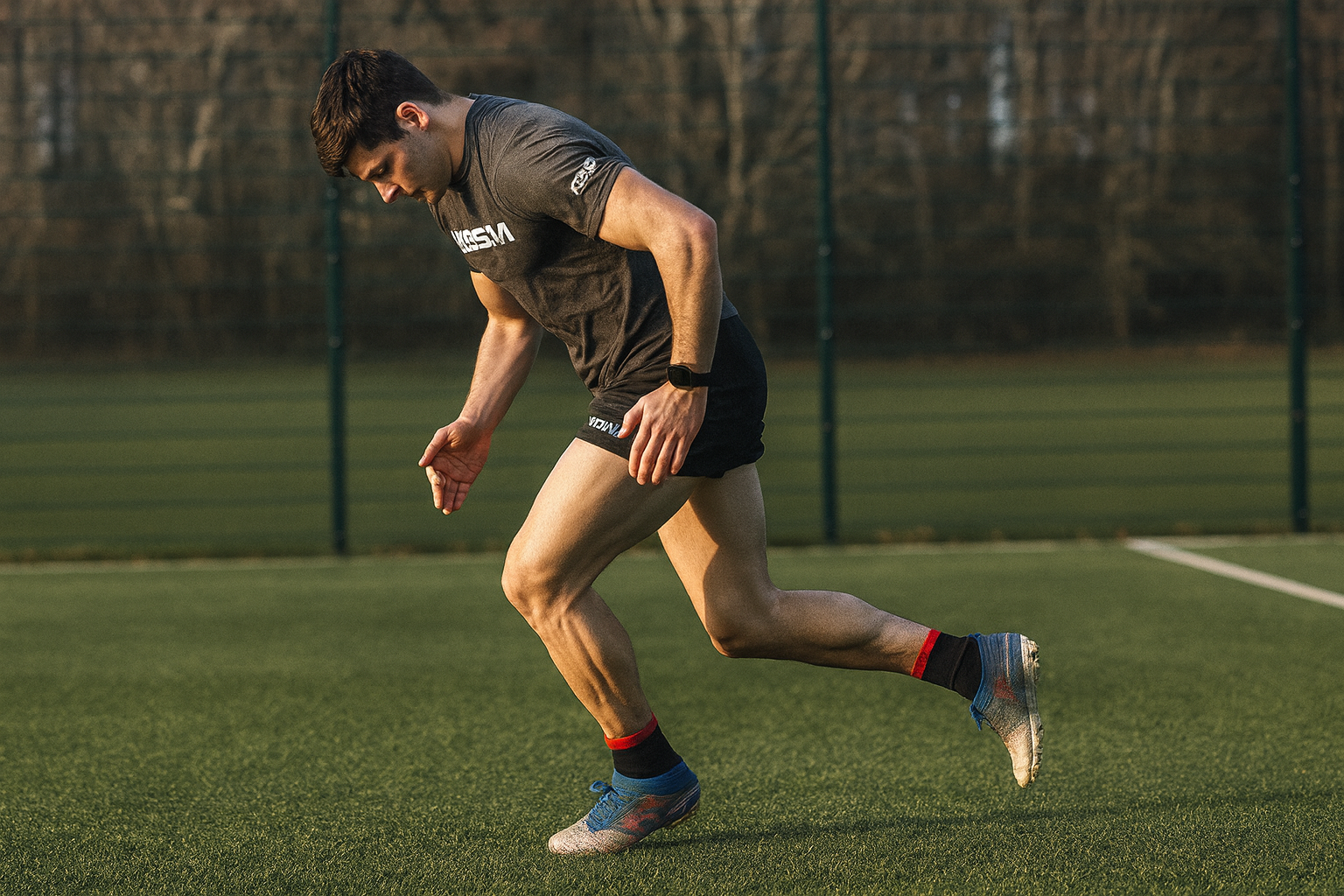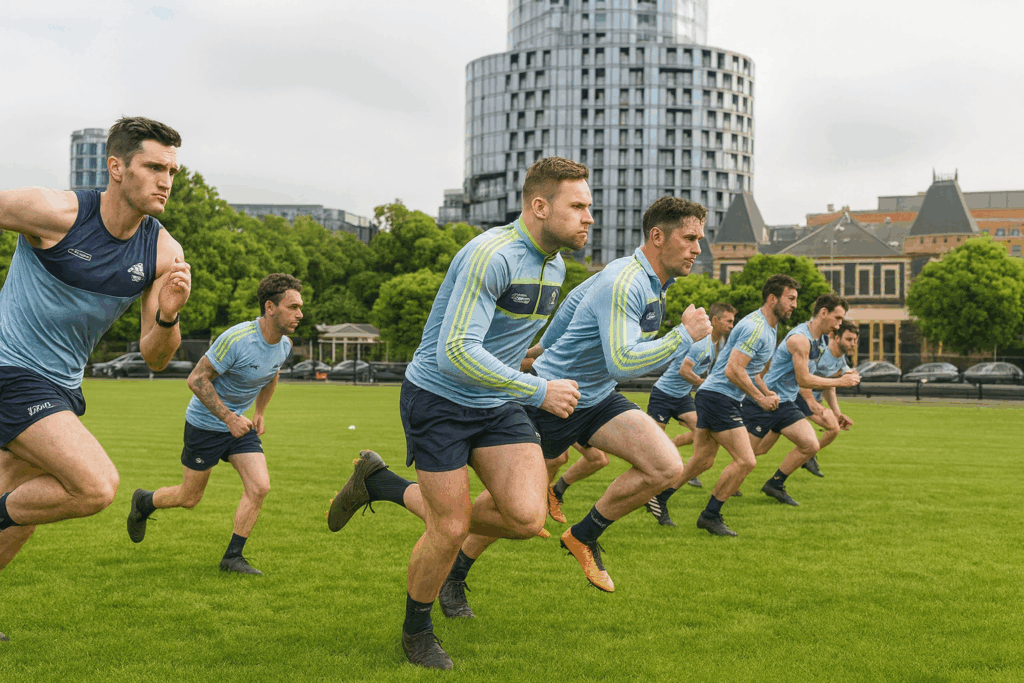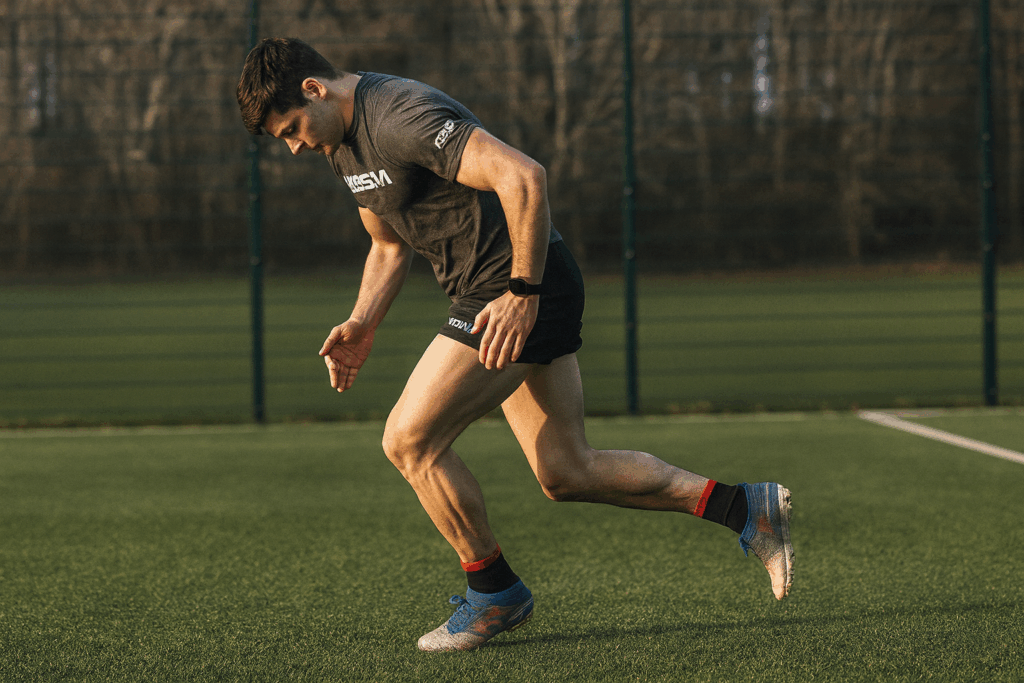Introduction
Hamstring injuries are one of the most common reasons GAA players miss matches.
They’re frustrating, slow to heal, and have a nasty habit of coming back.
But here’s the thing:
Speed training isn’t the cause — it’s part of the solution.
Done right, speed training can help protect your hamstrings, not break them.
Let’s break it down.
Why GAA Players Struggle with Hamstring Injuries
The GAA is built on bursts — deceleration, acceleration, cutting, sprinting, collisions.
Hamstring injuries often happen during high-speed running, especially in the late stages of games when fatigue sets in.
Poor sprint mechanics, weak posterior chains, and lack of exposure to top-end speed are all part of the problem.
A study by Murphy et al. (2020) in elite Gaelic footballers found hamstring strains accounted for nearly 17% of all injuries, most caused during sprinting.
So how do we change that?
Not by avoiding sprinting.
By getting better at it.
Why Speed Training Helps — Not Hurts
Speed training does three big things for hamstring health:
- Improves sprint mechanics
Efficient movement = less strain on the hamstrings. - Builds tissue tolerance
Sprinting is a high-force activity. Gradually building exposure prepares your hamstrings for match demands. - Strengthens the posterior chain
Sprinting at full intensity is one of the best exercises for hamstring strength — better than most gym lifts.
Repeated sprint exposure has been shown to reduce injury risk when it’s part of a progressive plan (Mendiguchia et al., 2016).
In short — sprinting makes your hamstrings stronger, not weaker, when it’s programmed properly.
How to Integrate Speed Work for Hamstring Health
If you want to protect your hamstrings, stop avoiding sprinting.
Start preparing for it.
Here’s how to build it into your week.
1. Sprint Exposure: Little and Often
- 2x per week, ideally after a warm-up or low volume session
- Start with 2–4 sprints at 90–95% intensity
- Build to 4–6 sprints at 95–100% over 3–4 weeks
- Full recovery between reps (2–3 min)
Example:
- Week 1: 3x20m sprints @ 90%
- Week 2: 4x30m sprints @ 95%
- Week 3: 5x30m sprints @ 95–100%
- Week 4: 6x40m sprints @ 100%
Keep it clean and sharp. Sprinting when fatigued defeats the purpose.
2. Drill 1: Wall Drill – Sprint Posture
Helps players learn body position at acceleration.
- Stand tall against a wall at a 45° lean
- Drive knee up with opposite arm, hold 2 seconds
- Switch legs, repeat 5–6 reps per side
- Focus: posture, tension, rhythm
Add in rapid switches once posture is clean.
3. Drill 2: Sled Push or Band-Resisted March
Teaches projection and force application.
- Use a light sled or resistance band around the waist
- March with intent, staying low with big pushes
- Do 2–3 sets of 10–15m
This reinforces hamstring loading under control.
4. Drill 3: Flying Sprints (20–30m)
Builds top-end speed exposure.
- Jog in for 10m, then sprint 20–30m at 95–100%
- Do 2–4 reps with full rest
- Keep the distance short, focus on quality
Flying sprints are the gold standard for hamstring robustness.
Rehab vs Prevention: What’s the Difference?
For rehab, volume and intensity need tighter control.
But even in return-to-play phases, you still need speed exposure.
What changes is how much and how fast.
Too many GAA players go from no sprinting in rehab to full matches — and re-injure.
Instead, use a gradual return:
- Phase 1: Marching drills, resisted accelerations
- Phase 2: Low-intensity accelerations (10–20m)
- Phase 3: Flying sprints, full-effort work (30–40m)
Your goal?
Match intensity before you return to matches.
Coaches: What You Can Do
- Make sprinting a regular part of training — not just warm-ups or testing
- Track volume and intensity — 200–300m of sprint work per session is often plenty
- Separate sprint training from heavy field or gym work
- Encourage full recovery — don’t sprint fatigued
- Don’t skip it just because it’s raining or you’re short on time
Sprinting is a skill and a stimulus.
Treat it with the same care you give to gym work or tactical drills.
The Bottom Line
Hamstring injuries won’t be solved by foam rolling or just stretching.
They’re solved by building strong, fast, and resilient players.
And speed training, when done right, is one of your best tools for doing just that.
Sprinting is not the risk — the lack of it is.
References
- Murphy, D., Cahalan, R., Gormley, J., & Blake, C. (2020).
Injury incidence and distribution in elite Gaelic football: A prospective study in male inter-county players.
The American Journal of Sports Medicine, 48(6), 1469–1476.
https://doi.org/10.1177/0363546519899350 - Mendiguchia, J., et al. (2016).
Sprint mechanics and hamstring injury risk: Biomechanical insights for prevention strategies in football.
British Journal of Sports Medicine, 50(10), 582–583.
https://doi.org/10.1136/bjsports-2015-095679 - Egan, B., Young, W., Malone, S., & Collins, K. (2022).
Science and Hurling: A Review.
Sports, 10(8), 118.
https://doi.org/10.3390/sports10080118





